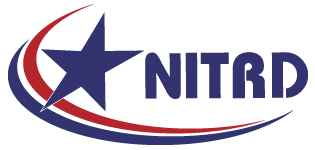Logistics
- Event: CONSTRUCTING HIGH-QUALITY CLOUD SERVICE LEVEL AGREEMENTS (SLAS)
- Date: August 6, 2014
- Location: National Science Foundation, Arlington, VA
As part of procuring cloud services from a cloud provider, a cloud customer must decide exactly what types of services are needed, a way to ensure that these services are genuinely provided and accountable, and also a contract mechanism to state the level of performance and other characteristics which pertain to the cloud services. The NIST Cloud Computing Standards & Technology Roadmap (NIST SP 500-292) identified a specific Requirement for: Technical specifications to enable development of consistent, high-quality Service-Level Agreements. To fully understand the scope of contracts and service level agreements in cloud computing, it is necessary to examine the definitions of each1:
Service agreement: A legal document specifying the rules of the legal contract between the cloud user and the cloud provider. (NIST SP 800-146)
Service-level agreement: A document stating the technical performance promises made by the cloud provider, how disputes are to be discovered and handled, and any remedies for performance failures. (NIST SP 800-146)
This workshop will explore avenues to assist cloud customer and provider in the procurement of cloud services by determining methods for constructing high-quality SLAs.
Specifically, the workshop (and breakout sessions) will:
-
- Explain the concepts behind SLAs
- Describe current work on standardizing the building blocks of SLAs (concepts, terms, definitions and contexts)
- Discuss Services in terms of Performance, Management & Security
- Show the relationship of cloud service metrics and SLAs
Presentations
- Keynote Speaker – Matthew Goodrich, GSA, slides, video
- SLA Overview, Ken Stavinoha, Cisco, slides, video
- SLA 19086 Standard, Eric Simmon, NIST, slides
- SLA – Service Performance, Craig Lee, Aerospace Corporation, slides, video
- SLA – Service Management, John Calhoon, Microsoft, slides, video
- SLA – Service Security, S. Srinivasan, Texas Southern University, slides
- Cloud Carrier: Applicable Cloud Service Metrics, Steve Woodward, Cloud Perspectives, slides, video
- Cloud Service Metrics Model, Frederic de Vaulx, NIST, slides
Breakout Sessions
- Breakout # 1 – Service Performance
- Breakout # 2 – Service Management
- Breakout # 3 – Service Security
- Breakout # 4 – Future of SLAs
Report outs from the Cloud SLA Workshop Breakout groups, video
1The service agreement – alternately known as master service agreement (MSA), terms of service (ToS), terms and conditions (T & C), is the higher order document in agreements between parties and the service-level agreement (SLA) is subservient. This is an important distinction because the SLA acronym is frequently, and incorrectly, used to reference the contractual relationship as a whole – a role that an SLA alone is incapable of performing.

